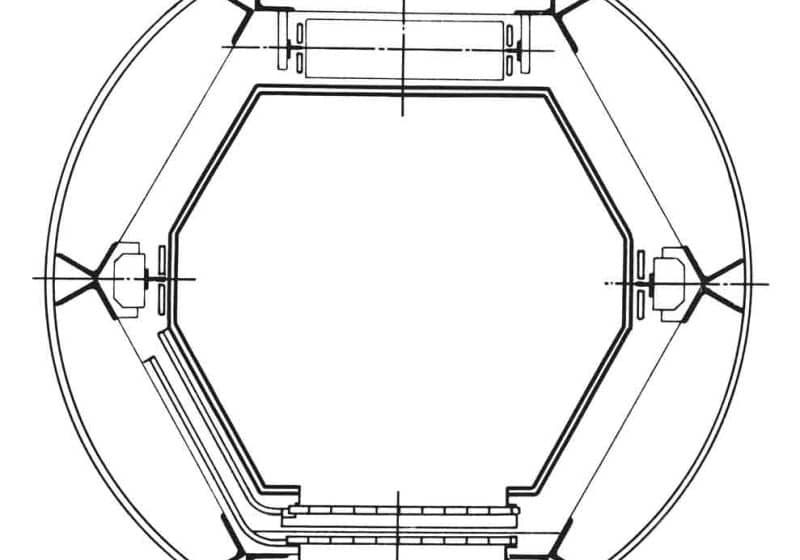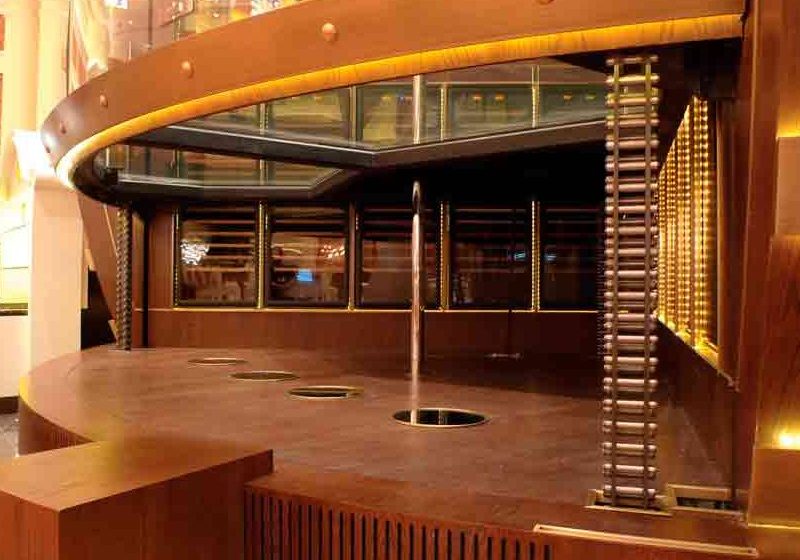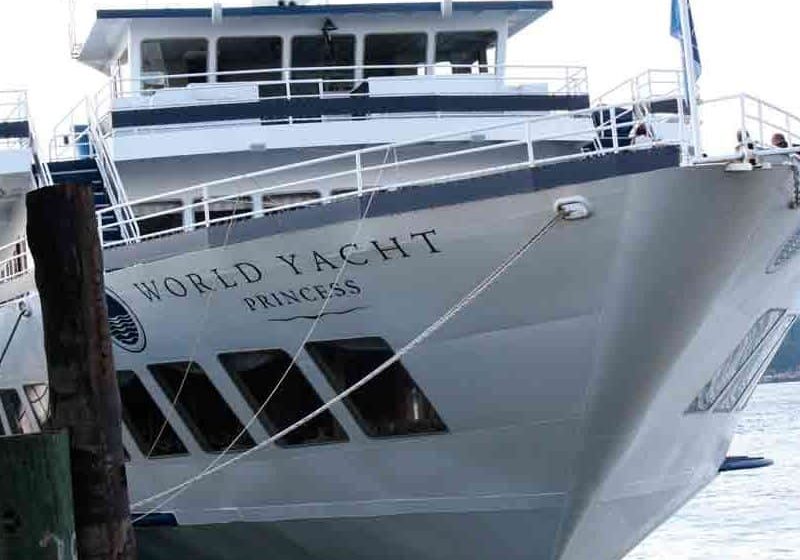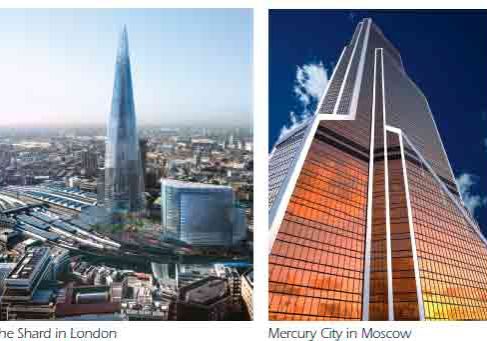Innovation in Elevator Safety Management in South China
Nov 1, 2012
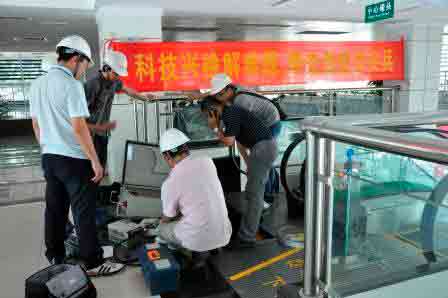
Statistics, maintenance, inspection and liability insurance in South China are covered.
South China’s Guangdong province stands out among other Chinese provinces and municipalities by having the greatest numbers of elevators in use. By the end of 2011, as many as 359,300 elevators, which is one-sixth of the total in mainland China, were recorded in operation. In addition, the number has increased 20% annually. Meanwhile, 79 elevator manufacturers and 622 contractors, roughly one fifth of the nation’s total, were providing installation and maintenance services in Guangdong.
With the continued growth in the number of installations, elevator safety has become a focus of social attention. To meet the challenge, the provincial Quality and Inspection Administration has created a program based on extensive investigation and interrogation of parties of varied interest. The program, approved by China General Administration of Quality and Inspection and Guangdong’s provincial government, started pilot implementation in Guangzhou and Dongguan (two cities in the developed area of Guangdong) in May. The program provides practical solutions to elevator safety problems in cities and areas where elevators and escalators are densely installed and frequently used.
The program sets the following goals: to solve the in-depth lingering problems in elevator safety supervision and management and further streamline the relationships between right and obligation on the part of the manufacturers, installers, users and managers or owners of the equipment. The reform focuses on elevator maintenance and inspection, with a breakthrough in the work processes, by creating an accident-liability insurance mechanism, improving the maintenance fund system and making a clear distinction between right and obligation by means of a structured process with clear responsibilities of the involved parties for the safe operation of elevators. The program enables the involved parties to bear their respective responsibilities for elevator safety; the users, managers or owners to enhance their safety awareness; and the social rescue and binding systems to appear available in time, all under an effective, collective supervision of the involved parties.
The highlight of the program lies in the changes made in the existing management system, which break the mode of supervision and management mainly by the government administration and allow the related government organizations, community bodies, trade associations, insurance companies and even the public to act as social supervisors. This creates a situation in which the supervision and management of elevator safety is conducted by a balanced team of related participants. This also paves the way to establishing a mechanism for scientific development of the special equipment, an innovation by making changes in government performances and allowing social organizations to play a full role in handling public-safety issues.
The existing problems include:
- A clear-cut safety liability definition among owners, users, property managers and technical managers is missing.
- Unfair and unhealthy competition in the maintenance market leads to poor job quality.
- Confused responsibilities by inspection bodies
- A social rescue-and-binding mechanism and the accident-liability insurance are missing.
- The equipment is running without sufficient funding for repair and/or modernization.
The Guangdong provincial Quality and Inspection Administration has made a systematic proposal to clarify one obligation, carry out two reforms and set up two mechanisms to revolutionize the existing mode of supervision and management of elevator safety by government administration in the market economy.
Clarification of Obligation
The program defined the obligation and right for elevator safety – the owner who has the right to use the equipment shall bear the immediate responsibility for any safety issues (i.e, the owner of using right shall pay the immediate compensation for the victims in an accident). With this made clear, the confusion when determining who is responsible for an accident among many parties has come to an end.
The owner of the using right is determined when the elevator gets registered for the special equipment. The owner must pay immediate compensation to the victim in an accident, unless the victim voluntarily claims responsibility from other parties. The owner has the right to employ accredited contractors to carry out maintenance and inspection; collect documents concerning elevator safety from manufacturers, installers, inspectors and maintenance contractors and confirm the documents by relating organizations and people; and claim for lost compensation from the above contractors whose product or work is a cause of the accident.
The owner of using right can be the party that possesses both the equipment and the right to use it, or the owner of the equipment can shift his or her right to use the equipment to another party, such as a property-managing company. In the latter case, the shift of the right and obligation must be specified in a contract. Likewise, the developer or builder is the owner of using right before employing a property managing company by contract.
Elevator maintenance is specified as part of the after-sales service by the manufacturer. The manufacturer should include a maintenance guide, among other product instruction papers, for the owner of using right to choose an appropriate company for maintenance. The product instruction should specify the lifecycle of the lift and/or its major components. When an elevator in use approaches the end of its lifecycle, the owner of using right has the right to consult the manufacturer for a proper solution. If the owner of using right ignores the solutions proposed by the manufacturer, the manufacturer will be exempt from any safety obligation.
The supervising administration of the special equipment shall make a unified inspection label that bears the registration code of the equipment, the user, the manufacturer, the maintenance contractor, the inspection institute, date for next inspection and phone for emergency rescue. The label will be signed by the owner of using right and put inside the car and updated after each inspection.
Reform in Maintenance and Inspection
Geographically speaking, 80% of the maintenance contractors in Guangdong are concentrated in the Pearl River Delta area where the economy is well developed. However, the percentage of the installations directly under the maintenance of the manufacturer is only 22%, and most of the units in use are contracted by small maintenance companies. As a result of high market competition, the owners of using right tend to use the contractor who offers the lowest price; thus, the real competent maintenance organizations (i.e., the manufacturers themselves) can hardly take a major share in the maintenance market. Due to the high competition, low-priced maintenance, scimping and use of poor-quality materials emerge. A study concluded that 68% of the maintenance companies regard the competition for lower prices as the cutthroat problem, and 80% of the companies worry about the results from the high competition, which can lead to loss of profit. In order to compensate for this, companies are prone to lowering job quality in maintenance and scimping, and some even reduce service mechanics’ tasks. This is the key problem that harms the development of the industry, apart from being the root cause of the accidents that threaten passenger safety.
The new mode in elevator maintenance is to include maintenance into after-sales service by the manufacturer so the manufacturer can take greater duty and responsibility. The program encourages the manufacturer to undertake direct maintenance or subcontract it to a company using its own certificate. In this way, the manufacturer is placed in position to take full liability for equipment safety throughout design, manufacturing, installation and after-sales services; thus, the manufacturer can play a major role in the maintenance market.
When the manufacturer undertakes maintenance of its own products, he can do it without an administration permit and certificate for maintenance. However, the manufacturer needs to register at the local administration and supervision department and bear the immediate responsibility for the quality of the maintenance. If the owner of using right chooses a contractor doing maintenance without the manufacturer’s authorization, the manufacturer is no longer responsible for any damage in the equipment, safety hazards and accidents resulted from improper maintenance work by others. If any defects are found in design, manufacturing or installation by the manufacturer, it should take effective measures to eliminate the safety hazards or have the product recalled on its own initiative. If the defects are found by the administration and supervision department, an order will be issued for the manufacturer to take a forced call-back of the product for corrective actions, and the manufacturer will receive possible punishment accordingly.
Elevator Inspection
The new mode in elevator inspection is to distinguish the regular or annual inspection from the supervision inspection by the administration. As new installations continue to increase, the inspection institutes to the government administration can hardly handle regular inspection work due to insufficient manpower; on the other hand, they have to shift the focus on the safety supervision and management of the equipment in use in order to reduce accident rates as a whole.
In the program, the supervision inspection by the administration and supervision department and the regular equipment inspection as social service are defined. The program allows third-party inspectors to carry out regular or annual inspections of the installations in use. The third party is a nonprofit organization, independent from the government bodies and the companies, providing technical services, undertaking inspection tasks and paid with service charges. The owner of using right may employ qualified inspectors for regular inspections but must be liable for using lifts with expired inspection or no-pass by inspection. If caught using such hazardous equipment by the supervision and administration department, the owner of using right shall receive an order to stop using it and be punished accordingly. The supervision and administration department will conduct random inspections according to varied situations funded by government budget. (It is free for the owner of using right.) The supervision inspection is meant to find potential safety hazards, eliminate disorders in the maintenance market and maintain it for fair competition.
Elevator Safety Liability-Insurance and Modernization Fund
Elevator safety accident-liability insurance proves to be a good solution to forming the social rescue and binding system in the event of accidents, in addition to the availability of immediate compensation for victims in an accident. The owner of using right is the major insurer, joined by the manufacturer, inspector and maintenance contractor. The insurance rates may vary on the basis of the risk assessment. This encourages the owner of using right to improve management and play an active role in risk prevention. The reform enables insurance companies to play a role in preventing elevator accidents; for example, an aged lift will not get insurance before having modernization done by the manufacturer. The insurance company will have to check the equipment safety and management from time to time, and if the situation gets worse, the rate will rise accordingly. The elevator modernization fund is a practical solution to the shortage of funds needed for elevator modernization and repairs, including upgrading major components for the safe operation of the elevator. The Construction Ministry and Finance Ministry of the State has issued regulations to separate the elevator modernization fund from the building’s maintenance fund. The program specifies the fund is needed for necessary repairs and modernization of the lift for safe operation. If the elevator modernization fund available is still insufficient for the project, the owner of using right should apply for the balance from the owner of the building or source it from other parties.
Get more of Elevator World. Sign up for our free e-newsletter.


